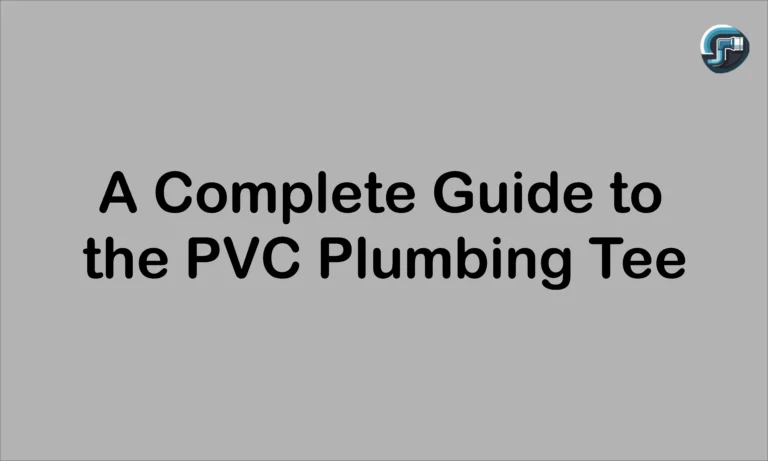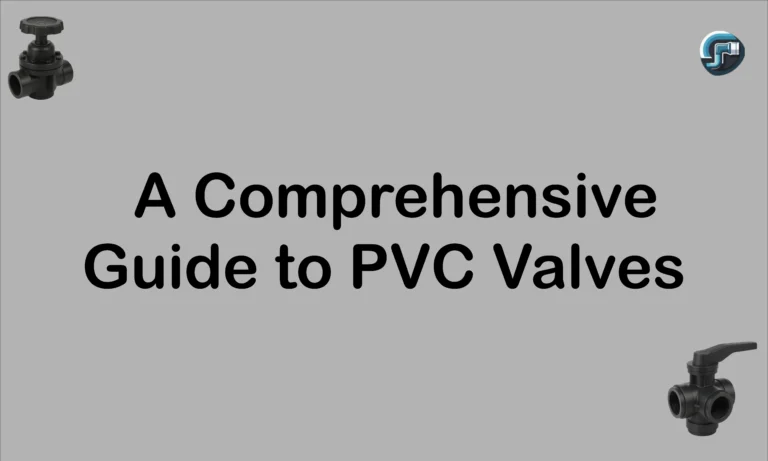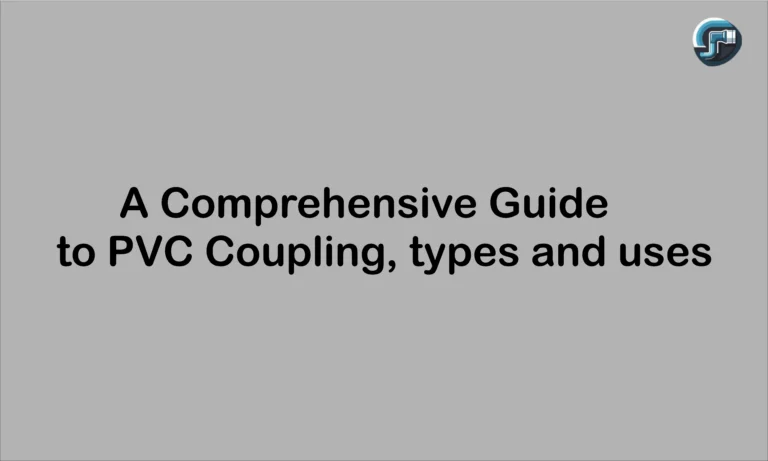Understanding PVC Nipple Sizes for Plumbing
Success is achieved in the smallest details in the highly complex network of pipes and fittings making plumbing systems. While large pipes deliver flow, it is the connectors that ensure the integrity of the entire system. One of the essential components among them is the PVC nipple, which serves to connect fittings and extend pipe runs. Its effectiveness pawns on choosing the correct size, however. Choosing the diameter and length is much more than detail; it is the key to a secure, leak-free, and durable system.
This guide is a comprehensive journey into the world of PVC nipple sizes. We will discuss why size is so critical when it comes to nipple plumbing, list the general sizes and lengths available in the market, and relate these dimensions to their specific applications. Whether a professional plumber conjuring up a complex installation or a DIYer trying to take care of a problem around the house, understanding PVC pipe nipple sizing will make all the difference for any project.

Why is Size Critical for a PVC Nipple?
A PVC nipple is a short piece of pipe, almost always featuring male threads on its ends, used to connect two female-threaded plumbing fittings. The concept is simple, but the execution requires precision. Selecting a pipe nipple fitting of the wrong size can lead to a host of problems, from minor annoyances to catastrophic failures.
Two of the most important measurements for a PVC nipple are the diameter and the length.
Diameter-The nominal pipe size of the nipple, such as 1/2″, 3/4″, or 2″, is designated as the diameter. The diameter must match perfectly with that of the nipple pipe fitting to which it will couple. If it does not, connection is not possible. Using a 1/2″ nipple with 3/4″ fittings will just not be able to connect, and forcing a wrong size will damage the threads and jeopardize the whole joint.
Length-This measurement refers to the distance measured between two adjoining fittings. Selecting the proper length is crucial for correct layout and function of the system. A nipple too short may not allow for interference with other components or may stress the pipe nipple fitting; one too long may disrupt the planned run of piping, create alignment problems, and force awkward or inefficient layouts.
After all, the correct nipple fitting plumbing component ensures that the threads engage perfectly. This, in turn, creates a solid, watertight seal capable of withstanding the operating pressure of the system. An improperly sized nipple creates weak points at best and leaks and possible blowouts at worst, turning a simple connection into a major liability.
Decoding PVC Nipple Sizes: Diameter and Schedules
When we talk about sizes of PVC pipes, the first thing that comes to mind is the diameter, which is one of the very important specifications. PVC nipple diameters correspond to standard nominal pipe sizes across the plumbing industry. Nominal size (e.g., “1-inch pipe”) does not refer to direct measurement of the actual physical inside diameter of the pipe. Instead, it’s a North American standard set of sizes for pipes used for high or low pressures and temperatures.
Schedule 40 Nipple Size
| Size (in.) | Wall Thickness (in.) | Inner Diameter (in.) | Outer Diameter (in.) |
| 1/4″ | 0.088″ | 0.344″ | 0.540″ |
| 3/8″ | 0.091″ | 0.473″ | 0.675″ |
| 1/2″ | 0.109″ | 0.602″ | 0.840″ |
| 3/4″ | 0.113″ | 0.804″ | 1.050″ |
| 1″ | 0.133″ | 1.029″ | 1.315″ |
| 1-1/4″ | 0.140″ | 1.360″ | 1.660″ |
| 1-1/2″ | 0.145″ | 1.590″ | 1.900″ |
| 2″ | 0.154″ | 2.047″ | 2.375″ |
| 3″ | 0.216″ | 3.042″ | 3.500″ |
| 4″ | 0.237″ | 3.998″ | 4.500″ |
| 6″ | 0.280″ | 6.031″ | 6.625″ |
Schedule 80 Nipple Size
| Nominal Pipe Size (NPS) | Wall Thickness | Inside Diameter (I.D.) | Outside Diameter (O.D.) |
| 1/4″ | 0.119″ | 0.282″ | 0.540″ |
| 3/8″ | 0.126″ | 0.403″ | 0.675″ |
| 1/2″ | 0.147″ | 0.526″ | 0.840″ |
| 3/4″ | 0.154″ | 0.722″ | 1.050″ |
| 1″ | 0.179″ | 0.936″ | 1.315″ |
| 1-1/4″ | 0.191″ | 1.255″ | 1.660″ |
| 1-1/2″ | 0.200″ | 1.476″ | 1.900″ |
| 2″ | 0.218″ | 1.913″ | 2.375″ |
| 3″ | 0.300″ | 2.864″ | 3.500″ |
| 4″ | 0.337″ | 3.786″ | 4.500″ |
| 6″ | 0.432″ | 5.709″ | 6.625″ |
Common PVC Nipple Diameters
PVC Pipe Nipple are available in a vast range of diameters to suit nearly any application. The most common sizes you will encounter, especially in residential and light commercial work, include:
1/2 inch: Very common for residential irrigation, such as connecting sprinkler heads or drip lines.
3/4 inch: A widely used size for main irrigation lines, outdoor hose bibs, and some residential plumbing.
1 inch: Often used for main water lines in homes, pool and spa plumbing, and larger irrigation systems.
1 1/4 inch: Found in drainage applications, sump pump discharge lines, and larger-scale water systems.
1 1/2 inch: A standard size for residential drain lines (like under sinks) and pool plumbing.
2 inch: Commonly used for main drain lines, larger pool and spa systems, and commercial plumbing.
Larger diameters, such as 3-inch, 4-inch, and even up to 12-inch, are also available for major industrial, municipal, and agricultural projects. The key is to always match the nipple diameter to the female fittings you are connecting.
Understanding Pipe Schedule (Wall Thickness)
Another size-related pipe feature is the thickness, which is indicated by the ‘pipe schedule’. The two most common schedules of PVC are: Schedule 40: This PVC is white with a thin wall and generally is adopted as standard for most residential applications-such as those for drainage, cold water supply, irrigation, and swimming pool systems. Most popular PVC nipple products are also on Schedule 40. Schedule 80: This PVC is gray with a thicker wall and has a higher resistance to pressures and temperatures, thus making it suitable for high-end applications in industries and chemical processing as well as commercial plumbing, which require additional durability. Schedule 80 nipples are important to connect Schedule 80 devices to make sure that an entire system maintains its high-pressure status.
A high-pressure system cannot mix and match schedules. A Schedule 40 nipple will thread into a Schedule 80 fitting of the same diameter, but it will create a weak point that compromises the pressure rating of the entire line.

Choosing the Right Length for Your PVC Nipple
After determining the correct diameter and schedule, the next step is to select the appropriate length. The length of a PVC pipe nipple directly impacts the spacing of your plumbing assembly. PVC nipples come in several length-based categories, each serving a distinct purpose.
Close Nipples (or Toe Nipples)
A close nipple is threaded from end to end with no unthreaded surface in the middle. This is the shortest possible length for connecting two fittings. When screwed together, the two female fittings will be almost touching.
Application: Close nipples are used in tight spaces where you need to join two components—like a valve and an elbow—with minimal separation. They are perfect for creating compact manifolds or for connections inside valve boxes where space is limited.
Standard Length Nipples
Standard nipples are pre-cut to common, short lengths and feature a small unthreaded section in the center. This unthreaded area allows a pipe wrench to grip the nipple without damaging the threads. Common lengths include 2″, 3″, 4″, 6″, 8″, 10″, and 12″.
Application: These are the workhorses of nipple plumbing. They are used for general-purpose connections where a small, defined gap is needed between fittings. For instance, you might use a 4-inch nipple to extend a pipe through a wall or to position a sprinkler head at the right height above the ground.
Long Nipples and Custom Lengths
Sometimes, a standard length just won’t do. For these situations, you can use “long nipples,” which are simply longer versions of standard nipples, or you can create your own. Plumbers often buy threaded PVC pipe, which comes in longer segments (e.g., 24 inches or more), and cut it to the exact custom length needed for a specific job.
Application: Custom-length nipples are essential when connecting fittings that are an awkward or non-standard distance apart. This is common in repair work, system retrofits, or complex layouts where pre-cut lengths are not suitable. A custom pipe nipple fitting provides the flexibility to solve unique spacing challenges.
How to Properly Install Your PVC Nipple?
Selecting the right size is half the battle; now the second half is proper installation. The right installation technique will ensure a leak-tight seal for years.
Confirm the Size: Male threads must match the female fittings in diameter and thread type. A quick test-fit by hand (without sealant) will confirm that you’re working with the right parts.
Clean the Threads: Give the male threads of the PVC nipple and the female threads of the fitting a good wipe to dislodge any dirt, dust, or plastic shavings. Clean threads are essential for a good seal.
Sealant on Threads: Never put together threaded PVC fittings dry. Wrap the male threads of the nipple with 3-4 layers of PTFE tape (Teflon tape). Always wrap the tape clockwise (in the same direction the fitting will be tightened). This will keep the tape from bunching and unraveling during assembly. Alternatively, a pipe thread sealant paste specifically compounded for use with PVC plastics may be used.
Hand-Tighten First: Screw the nipple into the fitting by hand. It should turn easily for several rotations. If you feel significant resistance immediately, you may have cross-threaded the connection. Back it out and start again.
Finish with a Wrench: Once hand-tight, use a pipe wrench or strap wrench to tighten the nipple an additional 1 to 2 full turns. For standard nipples, grip the unthreaded center section. For close nipples, you may need to carefully grip one end while threading it into the second fitting. Be very careful not to over-tighten, as this is the most common cause of cracked PVC fittings. The connection should feel snug and firm, not forced.
Check for Leaks: After the system is fully assembled, slowly introduce water pressure and carefully inspect every connection. If a small drip is present, a slight additional tightening might solve it. If not, you may need to disassemble the joint, apply new sealant, and reassemble.
FAQ’s
Conclusion
Though it was significant in the plumbing system, a PVC nipple plays a rather critical role. It is a versatile pipe connector that makes it possible to put together fittings, make turns, and build sturdy networks for anything from home irrigation to industrial processing.
Only the right size can unleash that kind of utility. Match the diameter and schedule to your fittings and pick the right inches to fit your spacing requirements, thus making sure the integrity and long service life of your hard work. The precision of a well-chosen nipple pipe fitting prevents leaks, withstands pressure and provides a stable connection that holds any sound plumbing project. Master PVC pipe sizes and empower yourself to build better, more dependable systems.






